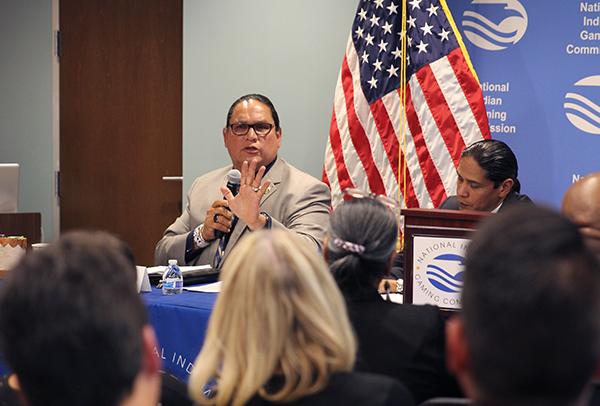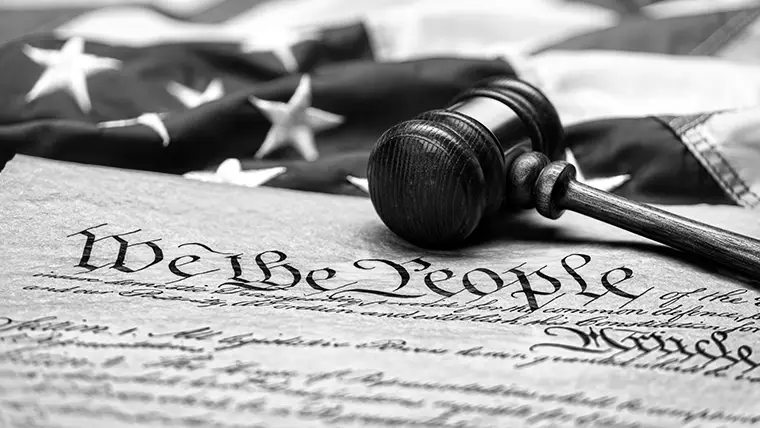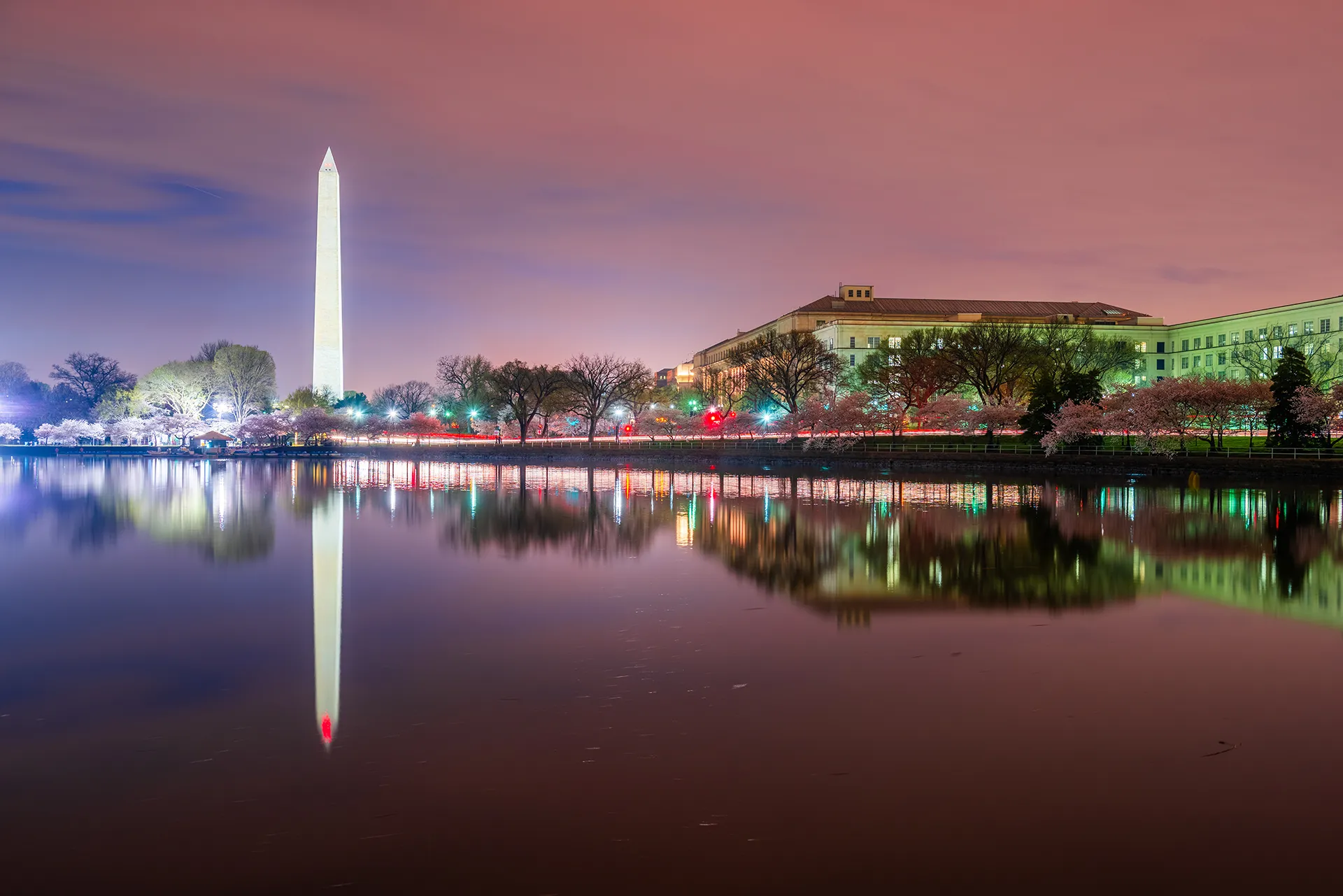October 22, 2018

National Indian Gaming Association Chairman Ernie Stevens, Jr., the panel reflecting on 30 years of the Indian Gaming Regulatory Act, alongside National Indian Gaming Commission Chairman Jonodev Osceola Chaudhuri and former representatives of the Indian gaming regulatory agency. Photo courtesy of Indian Gaming Magazine
Washington, D.C. – October 16, 2018 – The National Indian Gaming Commission (NIGC) hosted the “Reflecting on 30 Years of IGRA,” event which gathered Tribal leadership, federal policy-makers, gaming regulators, and Industry experts at the NIGC headquarters for a half day-long agenda of panels and discussion about the 30-year path of the Indian Gaming Regulatory Act (IGRA.)
According to the NIGC press release, the NIGC sponsored the public education event to foster dialogue among key stakeholders about lessons to draw from the history of Indian gaming that can help ensure the continued economic and regulatory health of the Indian gaming industry. The importance of supporting tribal decision-making and regulatory capacity as a key to upholding longstanding federal policies aimed at achieving tribal self-determination emerged as a central theme of the event.
National Indian Gaming Association Chairman Ernie Stevens, Jr., joined the event which was intended to provide valuable insight and reflection on the impacts IGRA and Indian gaming has had on Indian country throughout the 30 years since its inception.
Chairman Stevens joined NIGC Chairman Jonodev Osceola Chaudhuri, NIGC Commissioner Sequoyah Simermeyer and Mark Powless, Sr. for the first panel. Following them were former NIGC Commissioners Phil Hogan, Jana McKeag, Elizabeth Homer and Tom Foley.
Mark Powless, Sr. shared his reflections on the history of Indian gaming prior to IGRA, the watershed 1987 case of California v. Cabazon/Morongo, the passage of IGRA, and how tribal nations have – despite IGRA’s significant constrictions on aspects of tribal sovereignty – successfully worked to ensure that gaming remains a vibrant tool of tribal self-determination and economic development. Powless said, “When I chaired the Gaming Task Force in the seventies that went out across Indian Country to assess Indian Gaming, we discovered that Tribal Governments were doing great things with the revenues that came from their operations.” For a moment all those in the room could feel the energy from back in the day when Tribal Gaming was organizing in a pro-active manner. The Tribal Leadership of that era prepared for the ensuing challenges which clearly helped us to be successful today.
NIGA Chairman Stevens reflected, “To say that Indian Country at large and the Indian gaming industry, in particular, have come a long way in these 30 years would be a historical understatement.” Stevens added, “Tribal leaders embraced the Self-Determination policy of the 70’s and took matters into their own hands to rebuild Indian communities by opening the first modern-day Indian gaming operations.”
Stevens shared that in the early days, pre-IGRA, Indian gaming was very modest. Tribal operations were comprised primarily of paper bingo, tip jars, pull tabs and punchboards and that many of these operations took place in temporary pop-up buildings or local tribal community gyms. Adding that from the very beginning—one hundred percent of the revenues generated from these tribal government operations were dedicated to tribal government programs and services and improving health, education, and economic opportunities in Indian Country. He said, “Many entities didn’t agree with Indian Gaming, and this meant traveling the country on shoestring budgets, which was often funded with bake sales and charitable contributions, long before there were tribal lobbyists, cell phones, or e-mail, to tell our story.”
In 1987, after almost a decade of legal battles, these challenges culminated in the historic Supreme Court decision in California v. Cabazon Band of Mission Indians, which upheld the inherent sovereign right of Indian tribes to conduct gaming on our lands. On October `17, 1988 IGRA was enacted by the United States Congress to regulate gaming on Indian lands, establishing the NIGC as the regulatory structure for Indian gaming.
“IGRA did not come from Indian Country.” Stevens continued, “The Act was a compromise that sought to balance tribal, federal, and state government interests. While Indian Country never appreciated the compromise, we have made it work for our governments, our communities, and our people for thirty years now.”
Various Tribal Leaders expressed their sentiments with regard to IGRA and how their communities have benefitted from Indian Gaming. Chief Cheryl Smith of the Jena Band of Choctaw Indians, Chairwoman Cheryl Malteise of the Wampanoag Tribe of Gay Head, Council Member Granthum Stevens of the Colorado River Indian Tribes, Assistant Chief Lewis Johnson of the Seminole Nation of OK and Principal Chief James Floyd of the Muskogee Creek Nation to name a few of the Leaders in attendance. They shared the importance of improvements in healthcare, self-governance, preservation of culture and language, regulation, building their workforce, expanding housing opportunities, advancing technology and how it has opened the door for business beyond gaming. Principal Chief James Floyd expressed it best when he said, “Our nation has three decision making criteria that we use. They are; preserving, protecting and teaching. As our business evolves we look at every opportunity with these criteria in mind. As a Self-Governance nation it is important for us to be guided by these principles in our governing roles and responsibilities.”
Chairman Stevens shared, “Our industry has accomplished great things in the past thirty years, but we will never rest. Indian gaming has grown from paper bingo games and pull-tabs that gave Indian Country a boost economically to world-class destination resorts that generate more than $32 billion annually and today, Indian Gaming is 1% larger than Commercial Gaming, due to the hard work and dedication of our Tribal Leadership.”
“The future of Indian gaming is not yet written and policy-makers would do well to build on the self-determination principles that have powered the successes of the last 30 years,” said the Chairman of the NIGC, Jonodev Osceola Chaudhuri. “In evaluating the gains made over the last 30 years, we at the NIGC, as regulators, have seen the inarguable benefit of supporting tribal decision-making wherever possible so that the primary regulators of Indian gaming – the Tribes themselves – can pursue effective economic development tailored to their unique histories and landbases consistent with IGRA’s policy goals and regulatory framework,” he said.****
BIA Publishes Final Rule for Section 293 Class III Tribal-State Gaming Compacts

Remembering and Honoring the Legacy of Dr. Martin Luther King, Jr.

Statement From The Chairman Of The Indian Gaming Association: “Compromise or Collision Course: Americans Need Government to Function”
